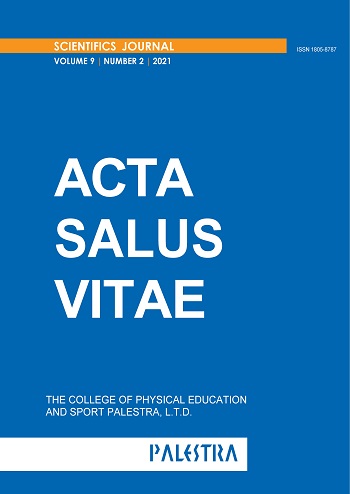Design of a project of a fitness tour to turkey for women 25-35 years old
DOI:
https://doi.org/10.58743/asv2021vol9no2.272Keywords:
fitness tour, recreational potential, Turkey, breathing practices, spa treatmentsAbstract
The aim of the study was to find out the opinion of women about the content of a fitness tour to Turkey. The survey was carried out using the group "Hit Fitness Omsk, Hit Fitness Omsk", in the social network "VKontakte". Group members were the respondents. The groups consist of 2035 participants (on April 25, 2021). The required sample size was 323 people. The study was conducted in April 2021. The survey method was used based on the methodology of Dobrenkov V.I. (2004). The research results showed the following. By gender, the majority of the respondents were female (73%). The age of the majority of respondents (42%) is 25-35 years old, 25% - 35-45 years old, 23% - 18-25 years old, 10% - over 45 years old. In this regard, the design of the tour was carried out for the age group 25-35 years old. Most of the respondents (49%) preferred living in an apartment.
The most attractive option is three meals a day (63%). The idea to add an animation program to the tour program was supported by 67% of the respondents. We found out what health problems the respondents have. The respondents' opinions were distributed as follows: 10% worried about stoop, 15% worried about back pain, 16% - swelling, 59% - all of the above Most of the respondents (85%) answered that they had never been on a fitness tour before, and 15% have already traveled on a tour of this format. Thus according to the results of the survey, it was revealed that a fitness tour to Turkey should be designed for a target audience from 25 to 35 years old, include 9 days and 8 nights, most of the respondents would like to stay in an apartment with the inclusion in the tour 3- x single meals, a specially selected animation program for every day, and should also include training and educational seminars.
Thus this study confirmed the high degree of interest of women aged 25-35 years to take part in a fitness tour to Turkey during which they will be able to improve their physical performance and solve some health problems.
References
Babicheva E. I. (2015) Project management for the development and implementation of fitness tours by tour operators in the Russian Federation Modern. Trends in the development of science and technology 2(4), 139-140.
Britvina V.V. (2013). Sports and recreational tourism and methods of conducting classes in a fitness tour. International tourism and sports: materials of the I All-Russian scientific-practical. conf. With international participation. Moscow.
Dobrenkov V.I. (2004). Methods of sociological research. INFRA-M.
Kuzhel Yu. L. Ivanova M. V. (2020). Tourist geography. Turkey. Near East. Yurayt Publishing House.
Krejčí, M., Tilinger, P., Vacek, L. (2016) Education to wellness, Education through wellness. College of PE and Sport PALESTRA.
Krejčí, M., Vacek, L. et al (2019). Public Awareness about the Importance of Wellness for Human Life. College of Physical Education and Sport PALESTRA.
Matyukhina V.E. (2011) Health tourism. Scientific notes of the University. P.F. Lesgaft. St. Petersburg, 6, 41-45.
Somkin, A.A. (2009) Fitness tourism as an up-to-date type of tourist service. The world of man, No.1., 104-109.
Tokar A.S. (2015) Fitness tourism as improving the efficiency of fitness services. Blagoveshchensk.
Downloads
Published
How to Cite
Issue
Section
License
Copyright (c) 2022 Marina Malygina

This work is licensed under a Creative Commons Attribution 4.0 International License.
Authors publishing in this journal agree to the following terms:
Authors retain copyright and grant the journal the right of first publication, while the work is also licensed under the Creative Commons Attribution License, which allows others to share this work acknowledging its author and initial publication in this journal.
Authors are permitted to enter into separate, additional contractual arrangements for the non-exclusive distribution of the work in the version published in the journal (for example, to publish it in a book), with an acknowledgement of its initial publication in this journal.
Authors are allowed and encouraged to share their work online (for example, on their websites) before and during the editorial process of their contribution, as such a practice can lead to productive exchanges of ideas and also earlier and higher citation of the published work (See the Open Access Effect).


